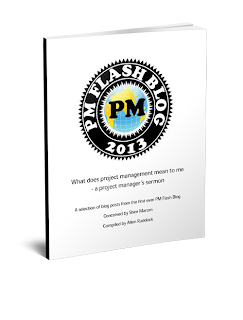In military circles a "force multiplier" is a factor, capability, or other influence that has the effect of making the force larger or more effective than it physically is. Instead of massed troops, a less awesome force -- multiplied up in some way by a force multiplier -- has the effective impact of the larger force.
Does this idea apply to our domain: project management?
It could of course.
One possibility is the impact of a true genius. Can one individual have the impact of many? Possibly.
We've all played the management training game of having a team solve a problem more effectively than one individual -- but can it work in reverse? Can the intersection of genius with project teams really work?
Genius is often iconoclastic... a challenge to all the norms. Genius is often temperamental, intolerant, arrogant, and self-centered. We know: arrogant people take risks; arrogance begets mistakes.
Not exactly your team player, but hey!... the genius is supposed to have an extraordinary impact; not necessarily to blend into a team
And, here's some news you can use: You can't schedule epiphanies; you can't schedule break-through innovation; you can't schedule the next discovery of a new law of physics. And, you can't schedule the impact of genius...
But over time, something is bound to happen if a genius is given latitude: arrogance, intemperance, etc are accepted as the cost of doing business. That of course is the power of small business with little bureaucracy... nothing administratively to get in the way (and vice versa: don't look for break-out genius in a large organization, Apple perhaps excepted... but only because Jobs was at the top)
So, back to PM: can you make room for genius among your project processes, metrics, and dashboards?
Read in the library at Square Peg Consulting about these books I've written
Buy them at any online book retailer!
Read my contribution to the Flashblog





